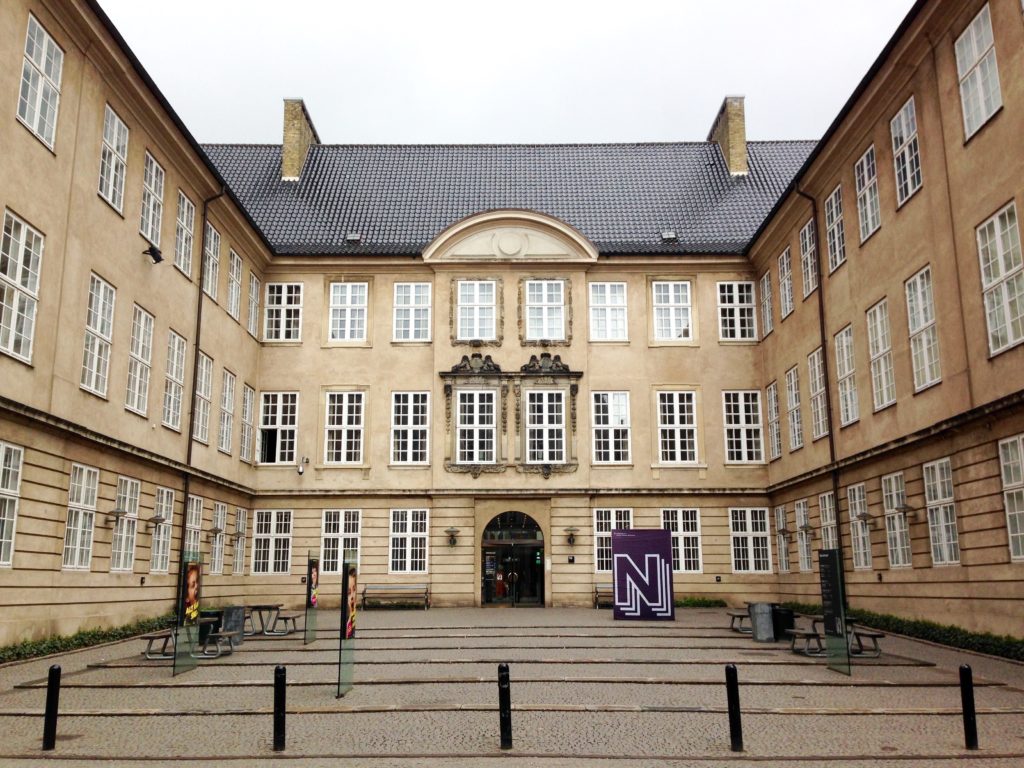The National Museum of Denmark as a neocolonial institution
by Guðrun Henrysdóttir
“museums are structurally neo-colonial institutions” (Robin Boast in his article ‘Neocolonial Collaboration: Museums as Contact Zone Revisited’)
Concerned about Robin Boast’s polemic statement I set out to examine this polemic statement myself by going to the National Museum of Denmark in central Copenhagen. My aim was to understand this controversy in regards to the ethnographic collections of the National Museum.

Walking through the ethnographic collection of the museum felt tedious. As much as I appreciated the craftsmanship of the artefacts the museum setting put me off. There was little or no information concerning the artefacts (i.e. their use) or by whom and how they were collected. The artefacts were presented in a reductionist or even stereotyping manner. Moving through sections of ‘Africa’, ‘Melanesia’ and ‘South America’ and so forth cultural artefacts displayed as art were simplistically organised in categories such as “entire Africa”. Furthermore, the excessiveness made me feel indifferent toward the individual objects. I left the ethnographic collection bizarrely puzzled by consuming lands and the continent of Africa. I felt that there was no purpose to the exhibition other than to display the superfluous collection of historical objects – which would have been a point for discussion had it been encouraged by the museum.
Recalling the article by Boast, artefacts function as ‘contact zones’ as they are sources of knowledge and history, thus having the ability to “reinvigorate contemporary wisdom and understanding” (John Stanton cited in Boast). This seemed not be the instance of the ethnographic collection of the National Museum. Why not? I suggest two logics.
Firstly, the ethnographic collection of the museum is organised in the logic of exhibiting ‘objects as art’. A logic, which according to curator at the Danish, National Museum Mille Gabriel divorces the objects from their colonial past in an attempt to let them speak for themselves. However, the fact that these objects are places out of context in the context of an ethnographic collection in the framing of a museum makes any claim of neutral display implausible, I would argue.
Secondly, Boast argues that museums are neo-colonial institutions by the nature of collecting and exhibiting. In fact, it is so obvious a colonial setting that this is often overlooked. Revisiting Mary Louise Pratt’s concept of ‘the contact zone’ where cultures meet and grapple with each other, Boast points to the asymmetrical relation of power inherited in the concept and asks that museums acknowledge their position of dominance. Most notably in respect to stakeholder voices and when consulting and collaborating with source communities. The seemingly reciprocity in such collaborations, he states, is the definition of a neocolonial institution and should be understood as instruments of appropriation.
I do not doubt the good intension and professionalism of the museum’s curators. And in response to the conflict of representation Mille Gabriel has suggested reorganising the exhibition, following the principles of new museology i.e. educational engagements, consulting with source communities and including stakeholder voices. An example of such work can be seen in the museum’s exhibition, Web of the Spider Woman: Rugs from Navajo Nation curated in collaboration with the source community. However, despite good intentions the museum remains a space in which the other performs for us and not with us.

With this in mind, should the state funded National Museum of Denmark begin to view themselves as a neocolonial institution? Or assuming they already do, should the museum be (more) explicit about it towards visitors and how would that help us to decolonise our minds?
References:
Boast, Robin. 2011. “NEOCOLONIAL COLLABORATION: Museum as Contact Zone Revisited.” Museum Anthropology 34: 56–70
Gabriel, Mille 2016. “New Futures for Old Collections – Contemporary Collecting and Community Involvement at the National Museum of Denmark”, Museum and Society¸14 (2) 275-293
Stanton, John. 2003. “Snapshots on the Dreaming: Photographs of the Past and Present.” In Laura Peers and Alison Brown (eds.) Museums and Source Communities. Pp. 136–151. London: Routledge.